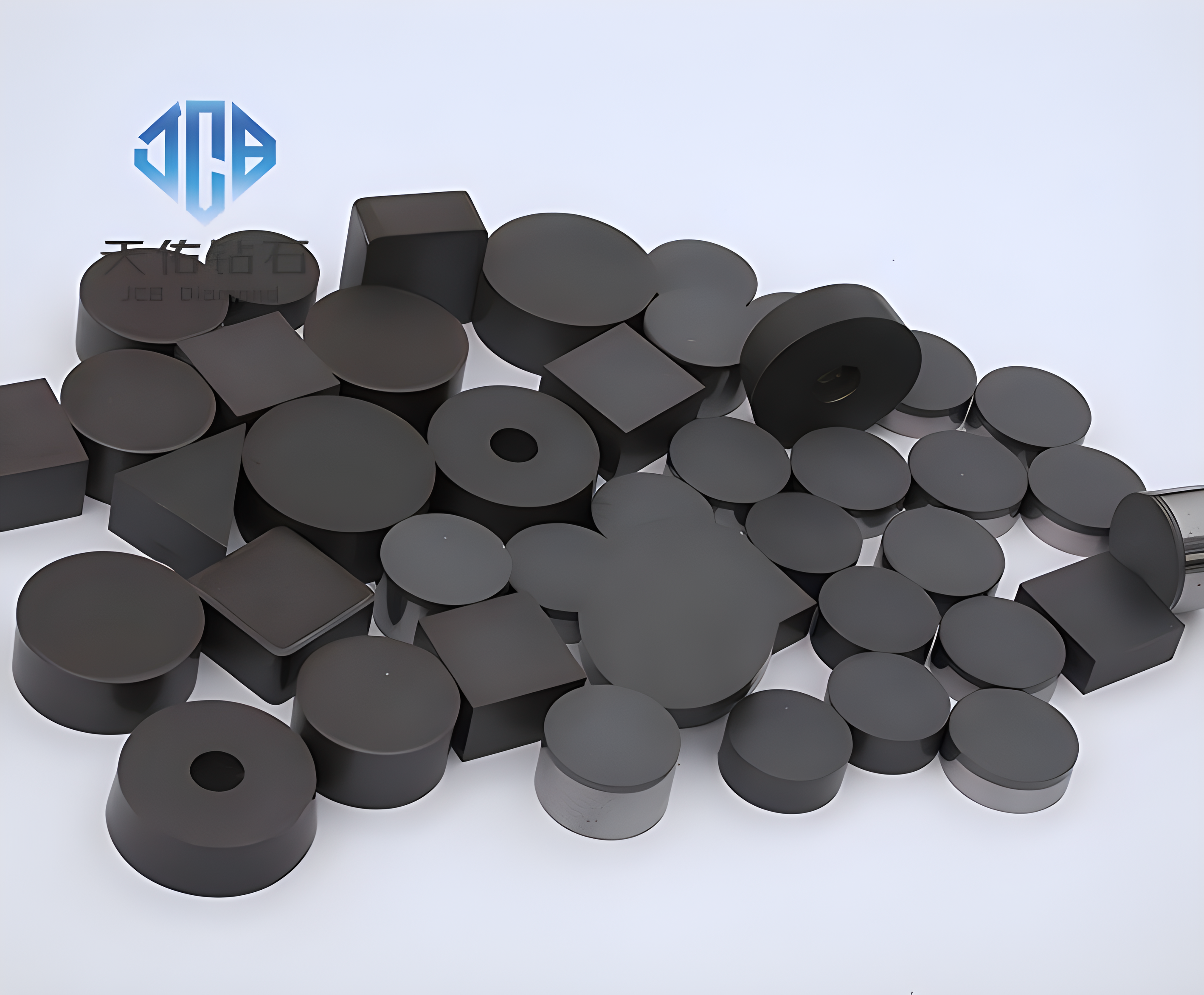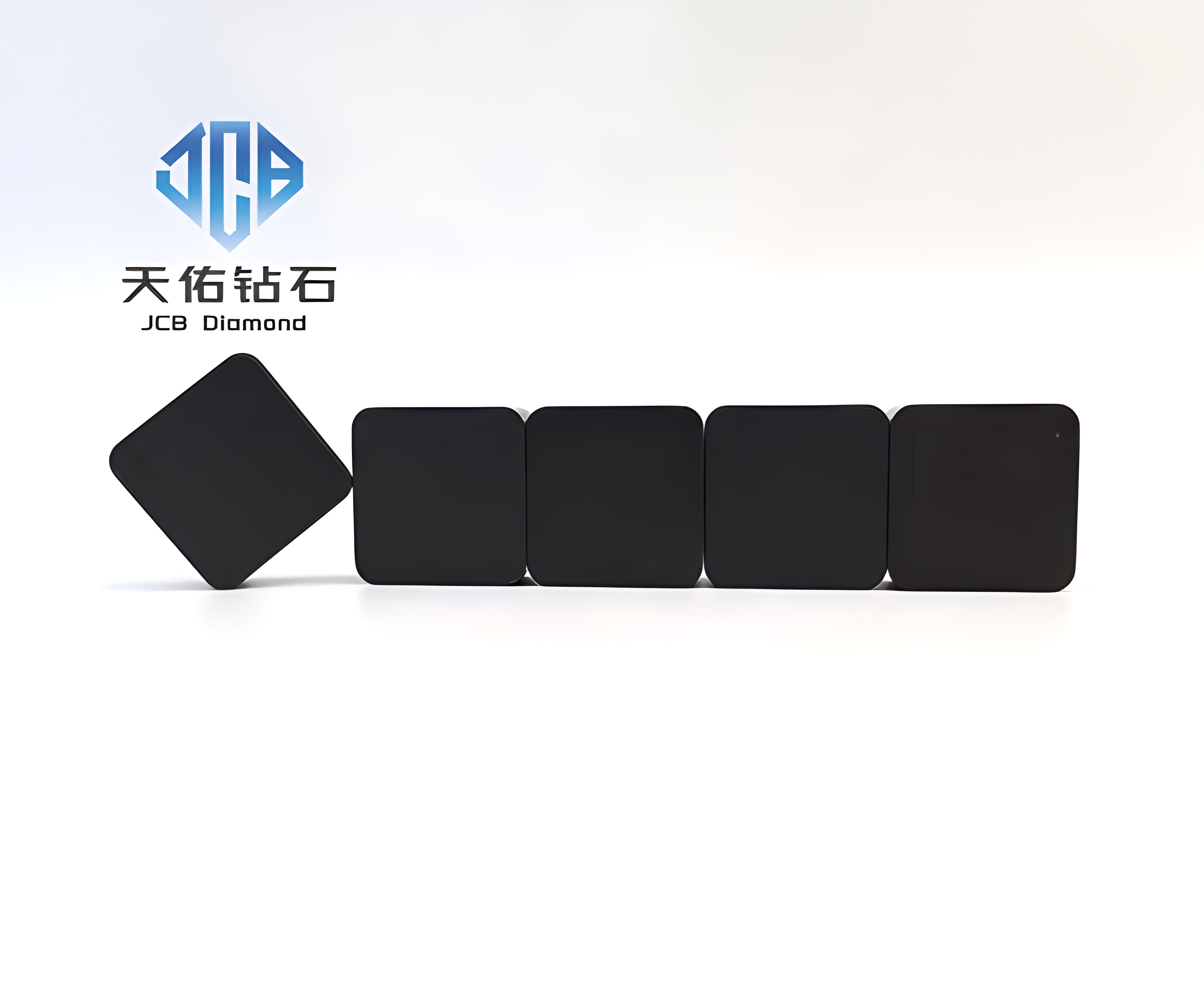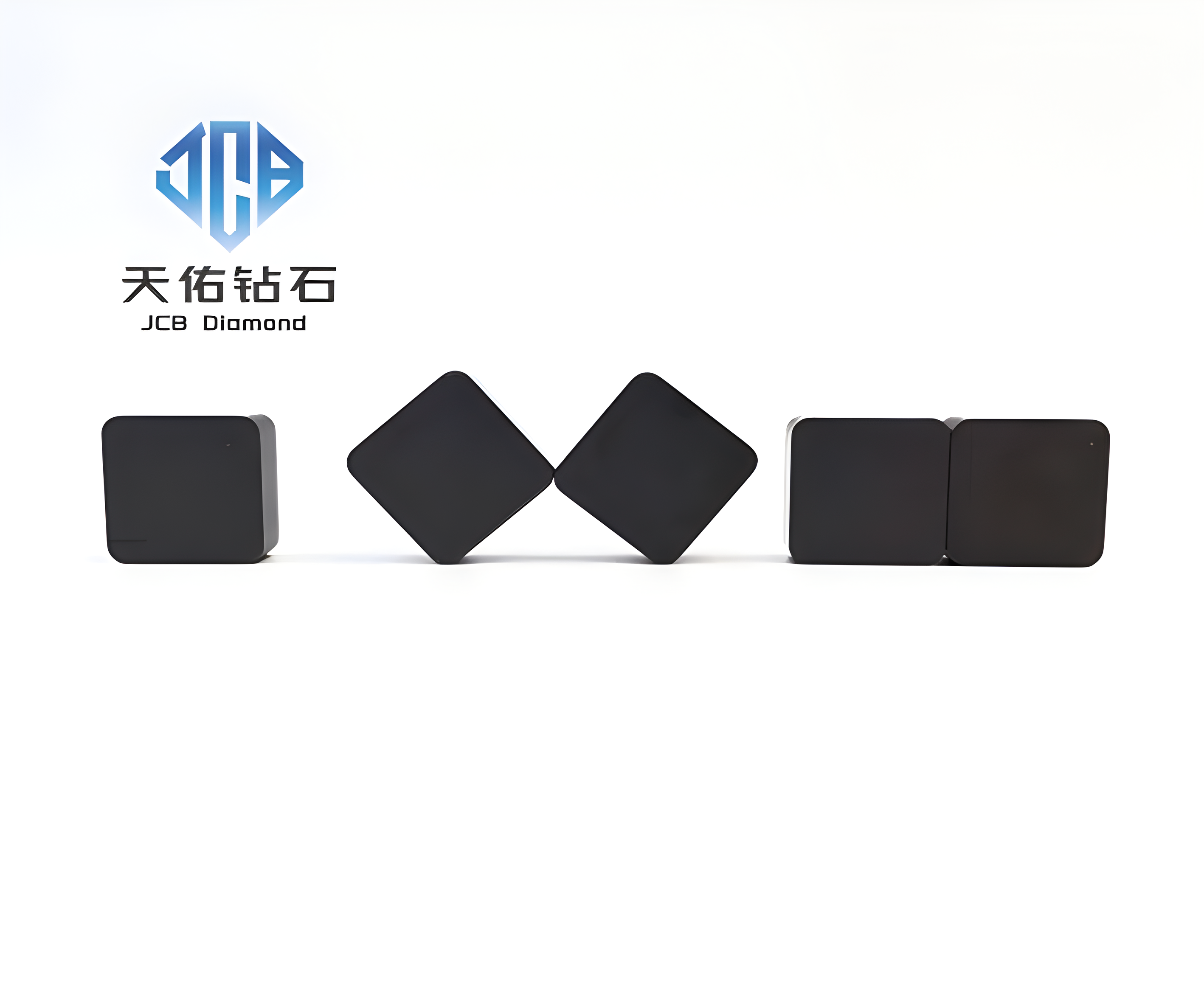I. Introduction
As the demand for high-precision and high-efficiency processing in modern manufacturing continues to rise, cutting tools, as one of the key processing elements, face severe challenges and huge opportunities. With its excellent physical and chemical properties, polycrystalline cubic boron nitride (PCBN) solid blades have emerged in the field of difficult-to-process materials and have become the focus of research for many scientific research institutions and enterprises. This report aims to deeply analyze the characteristics, preparation process, application status and development trend of PCBN solid blades, and provide reference for related research and industrial development.
II. Overview of PCBN Solid Blades
(I) Definition and Structure
PCBN solid blades refer to cutting tools made entirely of polycrystalline cubic boron nitride materials, with no or only a very small amount of other auxiliary components. Its microstructure presents closely arranged CBN grains, which are condensed through high temperature and high pressure sintering process or special chemical bonding, and have high density and uniformity.
(II) Performance characteristics
Ultra-high hardness: The hardness can reach 3000-5000HV, second only to diamond, and can effectively cut into various difficult-to-process materials with a hardness of HRC50 or above, such as hardened steel, chilled cast iron, high-temperature alloys, etc.
Excellent thermal stability: In high temperature environments (usually up to 1000°C-1200°C), it still maintains good cutting performance, the blade is not easy to soften and wear, and ensures the durability of processing accuracy.
Excellent wear resistance: Compared with traditional carbide blades, the wear life of PCBN blades can be extended several times or even dozens of times, reducing downtime caused by frequent tool changes and improving production efficiency.
Good chemical stability: It has strong corrosion resistance for most metals and alloys, avoiding tool failure due to chemical reactions during processing, and is suitable for a variety of complex working conditions.
3. Preparation technology of PCBN integral blades
(I) Raw material selection and pretreatment
High-quality CBN micropowder is the basis for preparing PCBN integral blades, which requires uniform particle size, high purity and good crystal morphology. CBN powder with a particle size of 0.5-10μm is usually selected, and it undergoes strict pretreatment processes such as pickling, ball milling, and grading to remove impurities and optimize powder performance to ensure the quality of subsequent sintering.
(II) Sintering process
High temperature and high pressure sintering (HTHP): This is the most common preparation method. The pretreated CBN powder is loaded into a graphite mold and kept under high pressure of 5-8GPa and high temperature of 1200°C-1800°C for a certain period of time to promote the formation of a strong bond between CBN grains. Depending on whether a binder is added, it can be further divided into:
Direct sintering: Without adding any binder, the resulting PCBN blade has high purity and high hardness, but the sintering process is extremely difficult and has strict requirements on equipment. In addition, the product has relatively low toughness and is prone to cracks. It is suitable for processing ultra-hard materials with extremely high surface quality requirements.
Binder-assisted sintering: Commonly used binders include metals (such as Ti, Co, Ni, etc.) and ceramics (such as TiN, Al₂O₃, etc.). Metal binders can effectively reduce sintering temperature and pressure, improve blade toughness, but will sacrifice hardness to a certain extent; ceramic binders help improve the high temperature performance and chemical stability of the blade, but the toughness is slightly insufficient. By reasonably adjusting the type and content of binders, the blade performance can be customized according to different processing requirements.
Spark plasma sintering (SPS): As a new sintering technology, SPS uses the instantaneous high temperature field generated by pulse current to achieve rapid sintering of CBN powder under low pressure (usually less than 100MPa). This method has a short sintering time (several minutes to tens of minutes), can effectively inhibit grain growth, and produce PCBN blades with uniform and dense microstructure and high comprehensive performance. However, the equipment cost is high, and the temperature and current control during the sintering process are complex, and large-scale industrial application still faces challenges.
(III) Post-processing process
After sintering, the PCBN integral blade usually needs to undergo post-processing processes such as grinding, polishing, and sharpening to obtain precise geometric dimensions, sharp cutting edges, and good surface finish. Among them, the sharpening process is particularly critical, and high-precision grinders and special diamond grinding wheels are required to strictly control the edge parameters (such as blade inclination angle, front angle, back angle, etc.) to ensure that the blade's cutting performance and cutting force distribution during the cutting process are reasonable.

IV. Application fields and case analysis of PCBN integral blades
(I) Automobile manufacturing industry
Engine cylinder block processing: Automobile engine cylinder blocks are mostly made of cast iron or aluminum alloy, and the hardness is high after quenching and other heat treatment processes. PCBN integral blades can efficiently and accurately mill and bore the inner wall of the cylinder body, cylinder liner mounting holes and other parts. The surface roughness can reach Ra0.8-Ra1.6μm, and the dimensional accuracy is controlled within ±0.01mm, which greatly improves the production efficiency and assembly quality of the engine.
Crankshaft processing: As a key transmission component of the engine, the crankshaft requires extremely high dimensional accuracy and surface quality. PCBN blades perform well in crankshaft turning and grinding, effectively reducing processing deformation and surface burns, extending tool life and reducing production costs. For example, an automobile manufacturing company uses PCBN blades to process crankshaft main journals. Compared with traditional carbide blades, the processing efficiency is increased by 30% and the tool life is extended by 5 times.
(II) Aerospace industry
Processing of high-temperature alloy parts: Turbine disks, blades and combustion chambers in aircraft engines are often made of nickel-based and cobalt-based high-temperature alloys, which have high hardness, poor thermal conductivity and severe work hardening. With its excellent high temperature performance and wear resistance, PCBN integral blades have shown strong advantages in milling, drilling and turning of high temperature alloys. They can achieve stable cutting and ensure the complex surface accuracy and surface integrity of parts. Taking a certain aviation parts manufacturing company as an example, PCBN blades are used to process nickel-based high temperature alloy turbine disc tenons, with a processing accuracy of ±0.005mm and a surface roughness of Ra0.4μm, meeting the strict quality requirements of the aerospace field.
Processing of titanium alloy structural parts: Titanium alloys have the characteristics of low density, high strength and strong corrosion resistance, and are widely used in aircraft fuselages, landing gear and other structural parts. However, the cutting processability of titanium alloys is extremely poor, and it is easy to produce problems such as sticking and rebound. PCBN blades effectively overcome these problems by optimizing the edge design and cutting parameters, and realize efficient roughing and precision finishing of titanium alloys. For example, in the processing of a certain type of aircraft titanium alloy beam, after using PCBN blades, the processing cycle was shortened by 25%, and the scrap rate was reduced from 5% to less than 1%.
(III) Mold manufacturing industry
There are many types of mold steels with a wide range of hardness, and the mold surface is complex, which requires extremely high wear resistance and precision retention of the tool. PCBN solid blades play an important role in the processes of mold cavity milling, corner cleaning after EDM, and polishing. For example, in the processing of injection molds, PCBN blades can quickly remove excess and obtain high-precision cavity surfaces. Only a small amount of manual polishing is required to achieve a mirror effect, which greatly improves the manufacturing efficiency and quality of the mold and shortens the launch cycle of new products.
V. Market status and competitive situation of PCBN solid blades
(I) Market size
In recent years, with the rapid development of industries such as automobiles, aerospace, and energy, the PCBN solid blade market has shown a steady growth trend. According to market research institutions, the global PCBN blade market size will grow from [X] billion US dollars in 2020 to [X] billion US dollars in 2025, with a compound annual growth rate of approximately [X]%. Among them, the Asia-Pacific region has the most vigorous demand for PCBN blades due to its developed manufacturing industry, especially China, as the world's largest automobile producer and consumer, and occupies a large share of the global market.
(II) Major manufacturers and brands
At present, the production of global PCBN integral blades is mainly concentrated in a few well-known companies, such as Kennametal in the United States, Iscar in Israel, Sumitomo Electric in Japan, Walter in Germany, etc. These companies have a dominant position in the high-end PCBN blade market with advanced technology research and development capabilities, rich production experience and a complete sales network. Their products cover various specifications, models and application fields, with high brand awareness and strong customer loyalty.
There are also a number of domestic companies dedicated to the research and development and production of PCBN blades, such as Zhengzhou Abrasives and Grinding Research Institute Co., Ltd., Funik Superhard Materials Co., Ltd., Zhuzhou Diamond Cutting Tools Co., Ltd., etc. Although there is still a certain gap in technology level with international advanced enterprises, through continuous technological innovation and cost advantages, they have gradually gained a foothold in the domestic low-end and mid-end markets and started to enter the high-end market, with their market share increasing year by year.
(III) Competitive strategy
International brands mainly focus on technological research and development innovation, and continuously launch new PCBN blades with higher performance and more adaptable to complex processing needs, such as developing special blades for new difficult-to-process materials, optimizing the microstructure and coating technology of blades, etc. At the same time, they strengthen the construction of global marketing networks to provide customers with a full range of technical solutions and high-quality services. On the basis of striving to catch up with the international technological frontier, domestic enterprises give full play to their cost advantages, focus on the development of cost-effective products, deepen the domestic market, strengthen cooperation with local manufacturing enterprises, quickly respond to customer needs with localized services, and gradually expand their market influence.

VI. Challenges and development trends faced by PCBN integral blades
(I) Challenges faced
Technical bottleneck: Although the preparation technology of PCBN integral blades has made great progress, there are still some technical problems that need to be overcome. For example, how to further improve the toughness and impact resistance of the blade to meet the processing requirements under high-speed and high-feed cutting conditions; how to optimize the sintering process to achieve higher precision and more uniform microstructure control, thereby improving the comprehensive performance stability of the blade, etc.
Cost constraints: The preparation process of PCBN blades is complex and the cost of raw materials is high, resulting in its relatively expensive price, which to a certain extent limits its market popularity, especially for some small and medium-sized enterprises and cost-sensitive processing fields. Reducing costs and improving cost performance have become the key to promoting the widespread application of PCBN blades.
Talent shortage: The research and development and production of PCBN blades involve multidisciplinary cross-fields, requiring compound talents with professional knowledge in materials science, powder metallurgy, machining, heat treatment, etc. At present, the talent reserve in related fields is insufficient and the talent training system is imperfect, which restricts the rapid development of the industry.
(II) Development trend
High performance: In the future, PCBN integral blades will develop in the direction of higher hardness, stronger wear resistance, better thermal stability and toughness to cope with the emerging new super-hard and difficult-to-process materials and increasingly stringent processing technology requirements. By developing new binders, optimizing grain structure, introducing nanotechnology and other means, the performance indicators of the blades are continuously improved.
Multifunctionality: In order to adapt to complex and changeable processing conditions, PCBN blades will have more functional characteristics, such as self-lubricating function to reduce cutting heat and friction, intelligent cutting function to monitor tool wear and processing status in real time, antibacterial function for special industries such as food and medicine, etc., to expand its application areas.
Green manufacturing: With the enhancement of environmental awareness, the preparation process of PCBN blades will pay more attention to energy conservation and emission reduction, and resource recycling. Adopt new green sintering technology to reduce harmful gas emissions and energy consumption, and explore ways to recycle and reuse waste blades to achieve sustainable development.
Customization: The personalized needs of the manufacturing industry are becoming increasingly prominent. PCBN blade manufacturers will provide customized tool solutions according to the specific requirements of different customers and different processing objects, including blade material, geometry, coating, cutting parameters, etc., to achieve precise processing and improve processing efficiency and quality.
7. Conclusion
As a high-end product in the field of modern cutting tools, PCBN solid inserts have played a key role in many industries such as automobiles, aerospace, and molds with their excellent performance, and have promoted the high-quality development of the manufacturing industry. Although currently facing many challenges such as technology, cost, and talent, with the increase in scientific research investment, the drive of technological innovation, and the traction of market demand, PCBN solid inserts will surely move towards high performance, multi-function, green, and customized directions, ushering in a broader development prospect, and injecting strong impetus into the transformation and upgrading of the global manufacturing industry.
